Common Challenges in Home & Garden Ecommerce – And How to Overcome Them
Here, we use our experience working with retailers such as Fishpools and Fothergill’s to explore practical solutions for overcoming the hurdles of home and garden ecommerce. Learn how to deliver high-converting, customer-centric digital experiences in this uniquely demanding sector.
Written By
Hannah Smiddy

With high-consideration purchases, large SKU catalogues, fragmented customer journeys and operational intricacies, the home and garden sector can be a particularly complex vertical for online retailers to navigate.
As consumer expectations continue to rise and digital competition intensifies, brands in this space must address these ecommerce challenges with strategic investment in customer experience, technology, and operational alignment.
This article explores some of the most common challenges faced in the home and garden ecommerce space – and how brands can overcome them to drive success.
The insights shared are informed by Swanky’s experience delivering ecommerce solutions for leading brands in this sector, including long-established furniture retailer Fishpools, British B-Corp Naturalmat, innovative German furniture brand Aeris, international horticultural supplier Fothergill’s, and Australian window dressing retailer Veneta Blinds.
Challenge: Extensive product catalogues overwhelm shoppers
Home and garden brands often carry thousands – sometimes tens of thousands – of SKUs. With numerous variants in colour, size, material and configuration, the complexity of product data can quickly become overwhelming for both internal teams and consumers.
Without intuitive navigation and discovery tools, customers may struggle to find the right product, leading to frustration, high bounce rates and lost sales.
Solution: Enhancing product discovery through smart UX
- Prioritising clear and logical navigation – This will enable high-intent shoppers to reach products quickly and easily. For example, during our work with heritage furniture retailer Fishpools, we restructured the site’s mega menu to support navigation by furniture type, material, and size – making it faster and more intuitive for users to reach the most relevant collection pages.
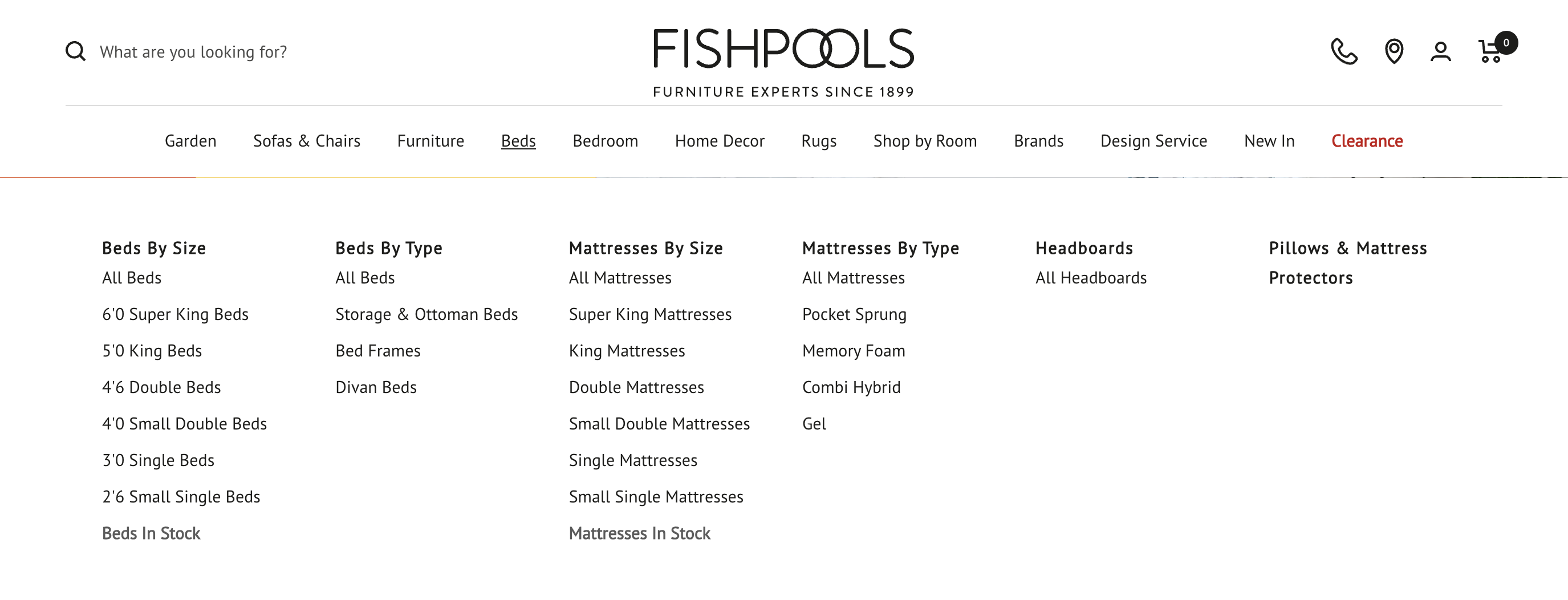
- Implementing comprehensive filtering on collection pages – Specifically, allowing users to shop by key features according to product type (e.g. firmness, size and finish for beds, and shape and seats for dining room tables). Incorporating visual cues such as colour swatches can further improve usability.
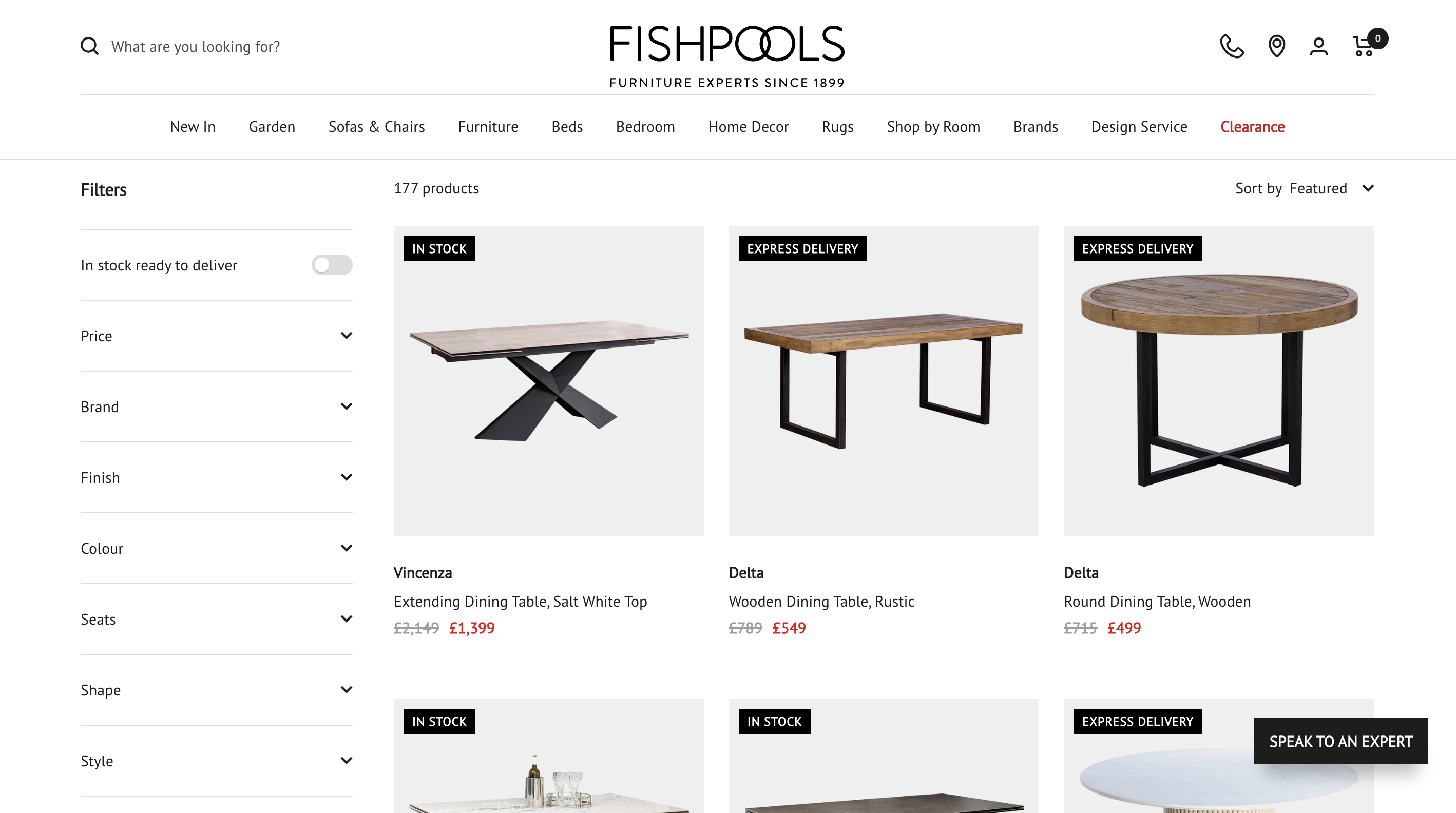
- Leveraging AI-powered on-site search – Using a search tool that understands natural language and returns contextually relevant results can reduce friction and improve search-to-purchase rates.
- Incorporating ‘Get the Look’ features – These group complementary products and inspire customers with curated room scenes or garden styles. This often helps users discover items that they might not have been actively searching for – improving the online shopping experience whilst boosting average order value.
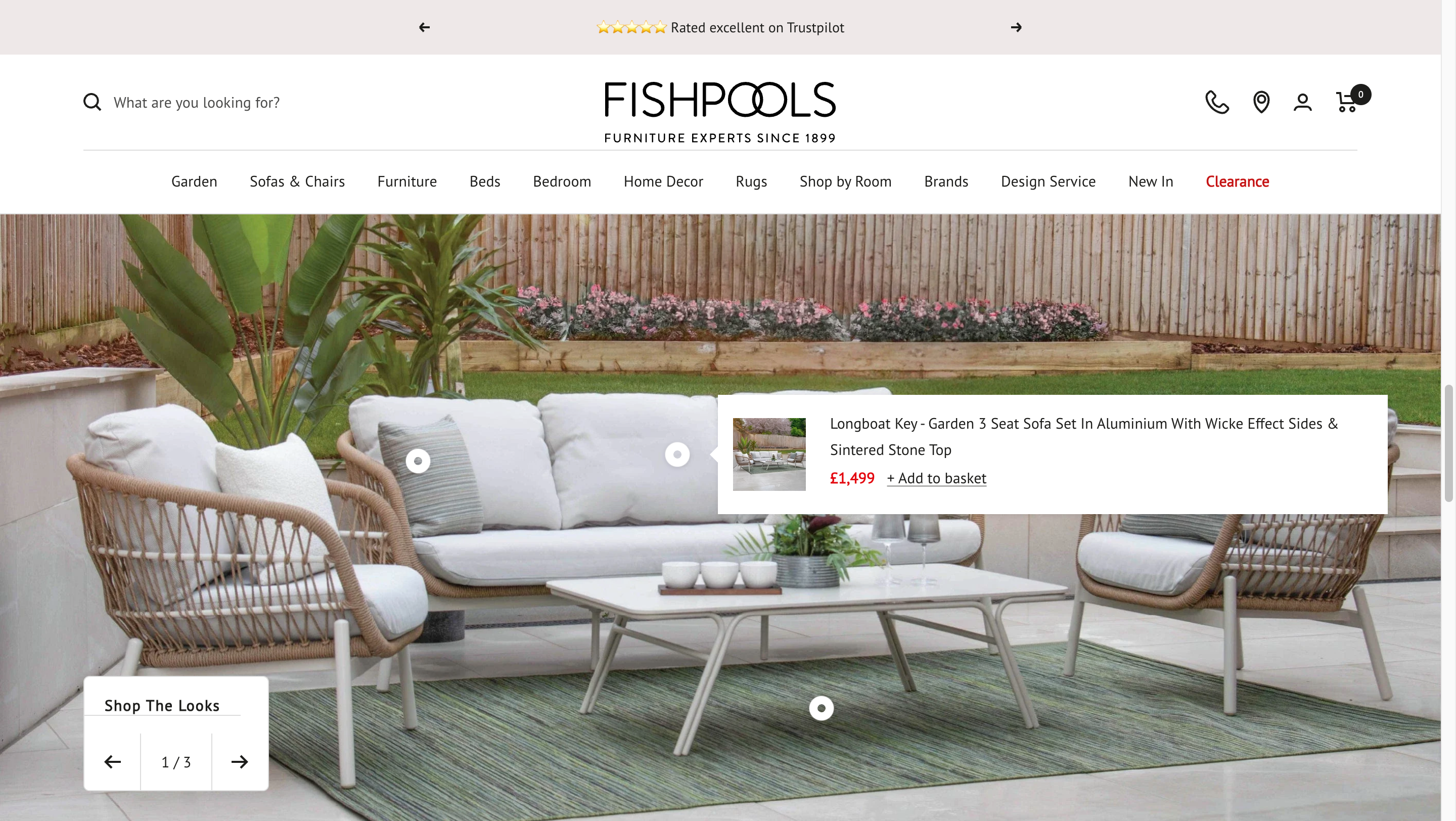
- Using cross-selling techniques on product pages and in the cart – The aim is to connect customers with relevant items to complete their basket (e.g. promoting cushions that match the rug in a user’s cart). This guides customers towards considering other purchases, saving them the effort of seeking out related items. Popular approaches include “customers who bought this also bought”, “frequently bought together”, and “related products”.
These strategies help shoppers narrow down large product catalogues based on their unique requirements – and bring the online experience closer to the tailored support of in-store shopping.
Challenge: Long & fragmented customer journeys
Purchasing decisions in the home and garden sector – such as investing in a new sofa or choosing outdoor furniture – are rarely made on impulse. These high-consideration journeys typically unfold over extended periods and span multiple channels, including search engines, social media, physical showrooms and online stores.
Without consistency across these touchpoints, customers can be left with a disjointed experience. Misaligned messaging, inconsistent branding and disconnected product information can erode trust and damage conversion rate.
Solution: Orchestrating a seamless omnichannel experience
To succeed, retailers must create a unified experience across touchpoints – one that builds trust, supports decision-making and encourages conversions, without compromising operational efficiency.
A seamless omnichannel experience involves:
- Understanding your customers and how they interact with your brand, in order to better anticipate needs and expectations.
- Mapping out key touchpoints, from initial discovery through to post-purchase engagement. This process helps uncover disconnects between channels, allowing you to refine the customer experience and ensure consistency across the entire path to purchase.
- Leveraging behavioural data and purchase history to deliver personalised content and product recommendations at each stage of the journey, regardless of channel. This increases relevance, strengthens engagement and supports informed decision-making.
- Integrating digital and in-store experiences through connected systems such as POS and CRM software – ensuring that customer data, inventory and purchasing history are consistent and accessible across touchpoints. This enables capabilities like in-store staff referencing a customer’s online activity, accurate cross-channel stock updates, and automated follow-up communications after a showroom visit.
By treating the customer journey as a holistic, cross-channel ecosystem – rather than a set of isolated touchpoints – brands can improve customer satisfaction, drive loyalty and boost conversion rates.
Challenge: Lack of physical interaction with products when shopping online
In a sector where feel, finish and scale are often critical to purchase decisions, not being able to touch or interact with products poses a significant limitation for ecommerce retailers. Online shoppers can be hesitant to purchase big-ticket or style-driven items without a clear sense of how they will look in their space. This can increase perceived risk, often causing low conversion rates.
Solution: Bridging the gap with visual aids & immersive experiences
- High-quality product photography – Without a tactile in-store experience, ecommerce photography plays a key role in purchase decisions. Professional-grade product shots, taken from multiple angles and clearly showcasing USPs, help communicate the look and feel of a product while reinforcing the brand quality.
- Well-curated lifestyle imagery – Showcasing your products in-situ helps consumers understand size, scale and aesthetic impact. It also helps to create a sense of desire, demonstrating how your product can elevate their home or garden. Former Swanky client Naturalmat, for example, leverages its rich library of lifestyle photographs to showcase its products in aspirational environments and support customer decision-making.
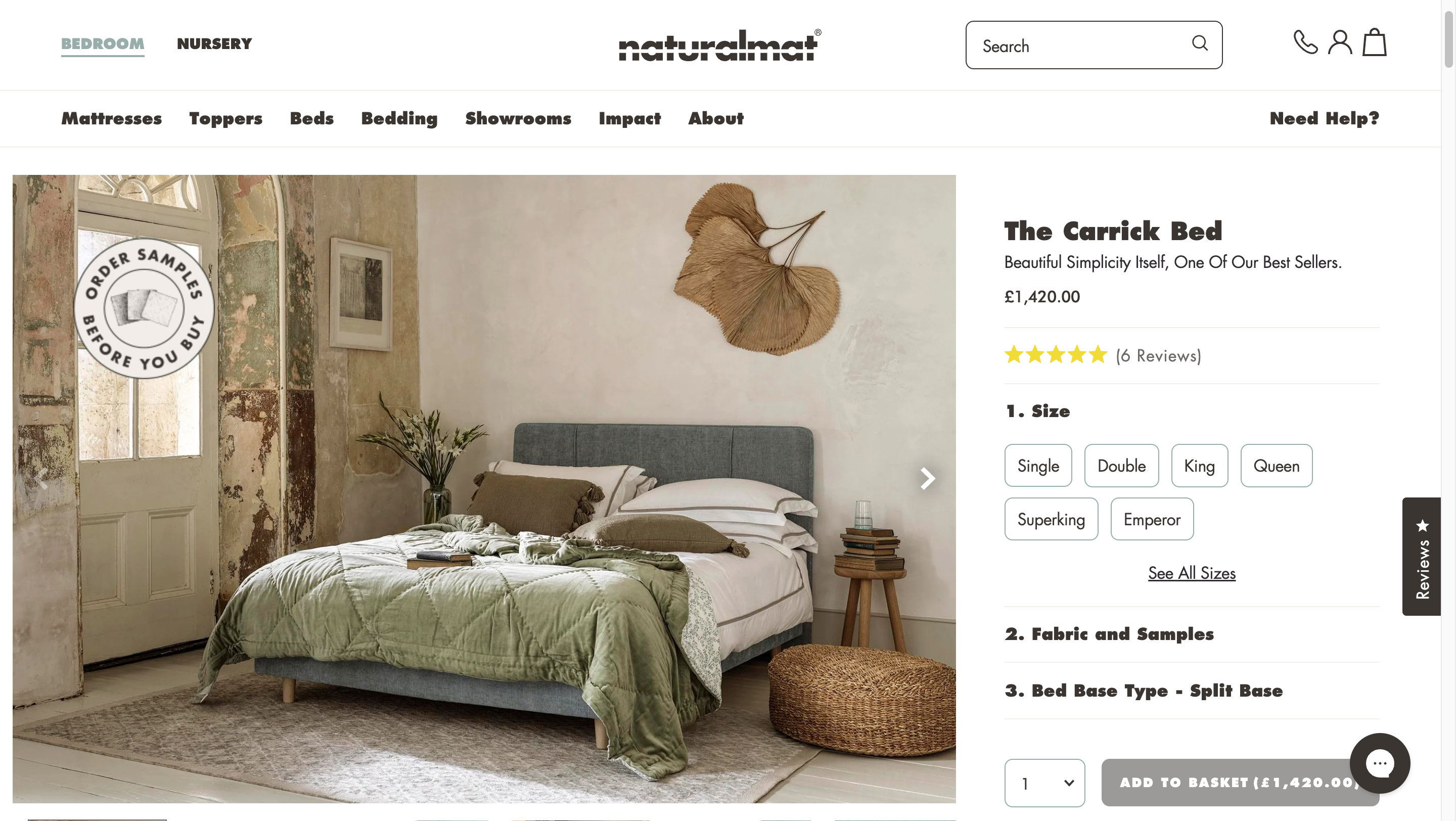
- Augmented reality (AR) and virtual reality (VR) – AR and VR tools allow shoppers to visualise what a product will look like in their space and more accurately assess suitability. These immersive technologies are particularly powerful for reducing uncertainty around the purchase of furniture, décor and garden structures.
- 3D product configurators -Interactive configurators enable shoppers to customise and preview products in real time, adjusting the size, colour, finish, or layout to suit their preferences. This elevates the online experience, boosting product confidence and driving conversions. Swanky developed such functionality for Aeris, enabling shoppers to configure office furniture items according to their personal needs.
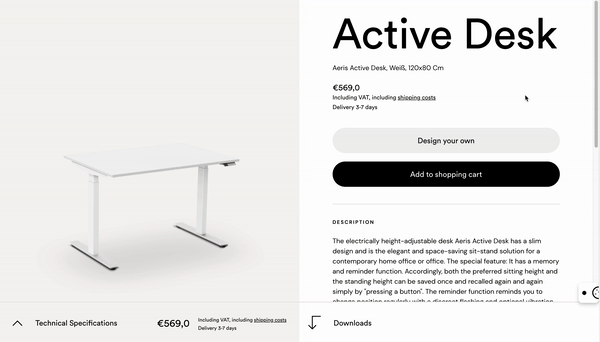
By replicating key aspects of the in-store experience through visual and interactive enhancements, brands can reduce friction, increase trust and improve conversion – especially for premium and customisable items.
Challenge: Complex customisation options disrupt the path to purchase
Many home and garden products can be customised according to customers’ preferences, with choices around fabrics, finish, size and configuration. However, when customisation options are presented poorly online, this can become a major point of friction in the customer journey.
Specifically, overloading product pages with too many options can overwhelm users’ cognitive load, disrupt the flow of decision-making and increase the risk of site abandonment.
Solution: Simplifying customisation through thoughtful design
The most effective ecommerce experiences make complex customisation feel effortless. By applying smart UX principles, brands can preserve flexibility whilst guiding their customers through their choices in a clear, structured way:
- Prioritise essential options first, using progressive disclosure to reveal additional choices only when relevant – helping users remain focused and reducing cognitive load.
- Use drawers or collapsible sections to house customisation options without cluttering the primary product page layout. We leveraged this approach when designing the Fishpools Shopify site – maintaining a clean, user-friendly product page whilst still offering a wide range of product configurations.
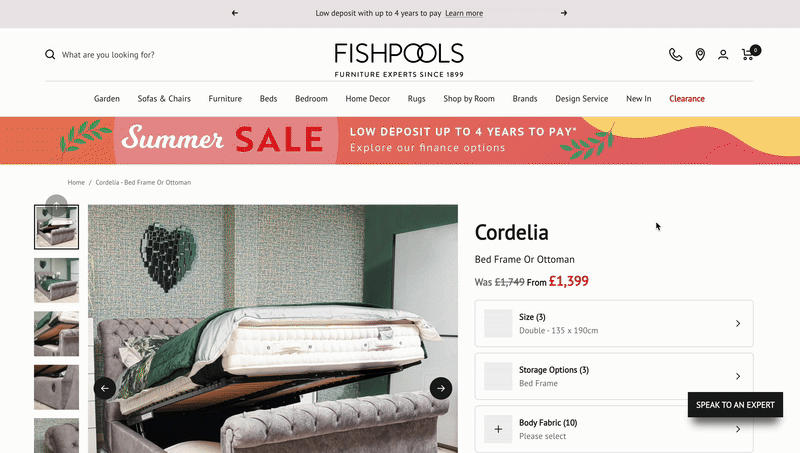
- Introduce guided selling tools or step-by-step configurators that walk users through each decision point. These interactive tools reduce the risk of overwhelm by presenting one choice at a time and providing helpful context – as demonstrated in the Aeris configuration tool highlighted earlier, as well as the below example from the Veneta Blinds ecommerce store.
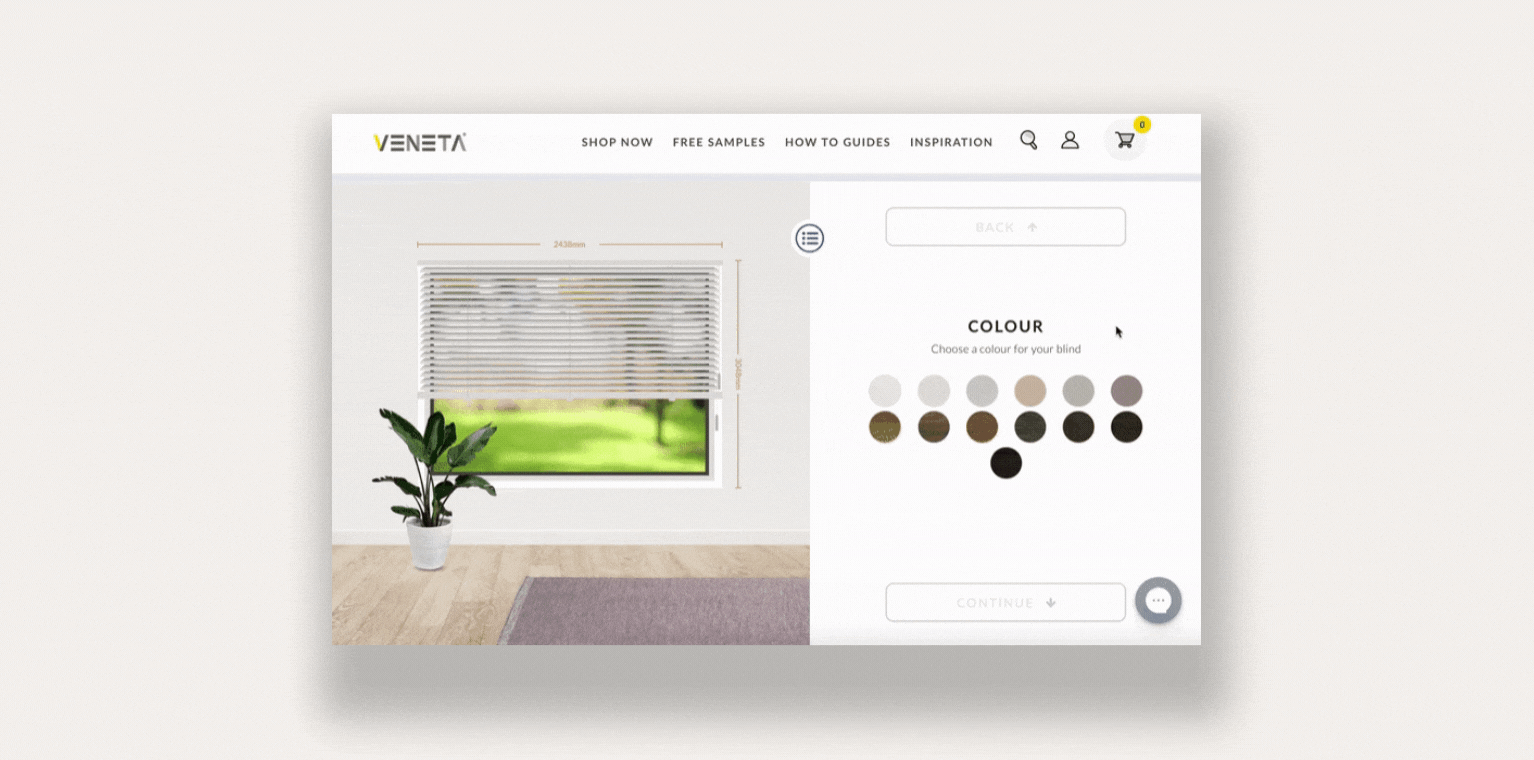
Challenge: Establishing trust for high-ticket purchases
Customers are often making significant financial investments when purchasing from home and garden brands. At this level of spend, trust in your brand and your products is non-negotiable. If shoppers are not confident in what you can offer them, they’re far less likely to convert.
Solution: Building trust through transparency, credibility & storytelling
In ecommerce, trust is currency. By leveraging trust-building elements across your website, you can reduce purchase anxiety, reassure shoppers and encourage conversions.
- Detailed product descriptions – Ensure product detail pages communicate all key information clearly – such as dimensions, materials, assembly requirements and care instructions. A lack of clarity introduces doubt and can prevent conversion.
- Social proof – Customer reviews, ratings and real-life photos help validate the quality and reliability of your products. Authentic social proof, like that shown in the example below, builds credibility and demonstrates a proven track record with other shoppers.
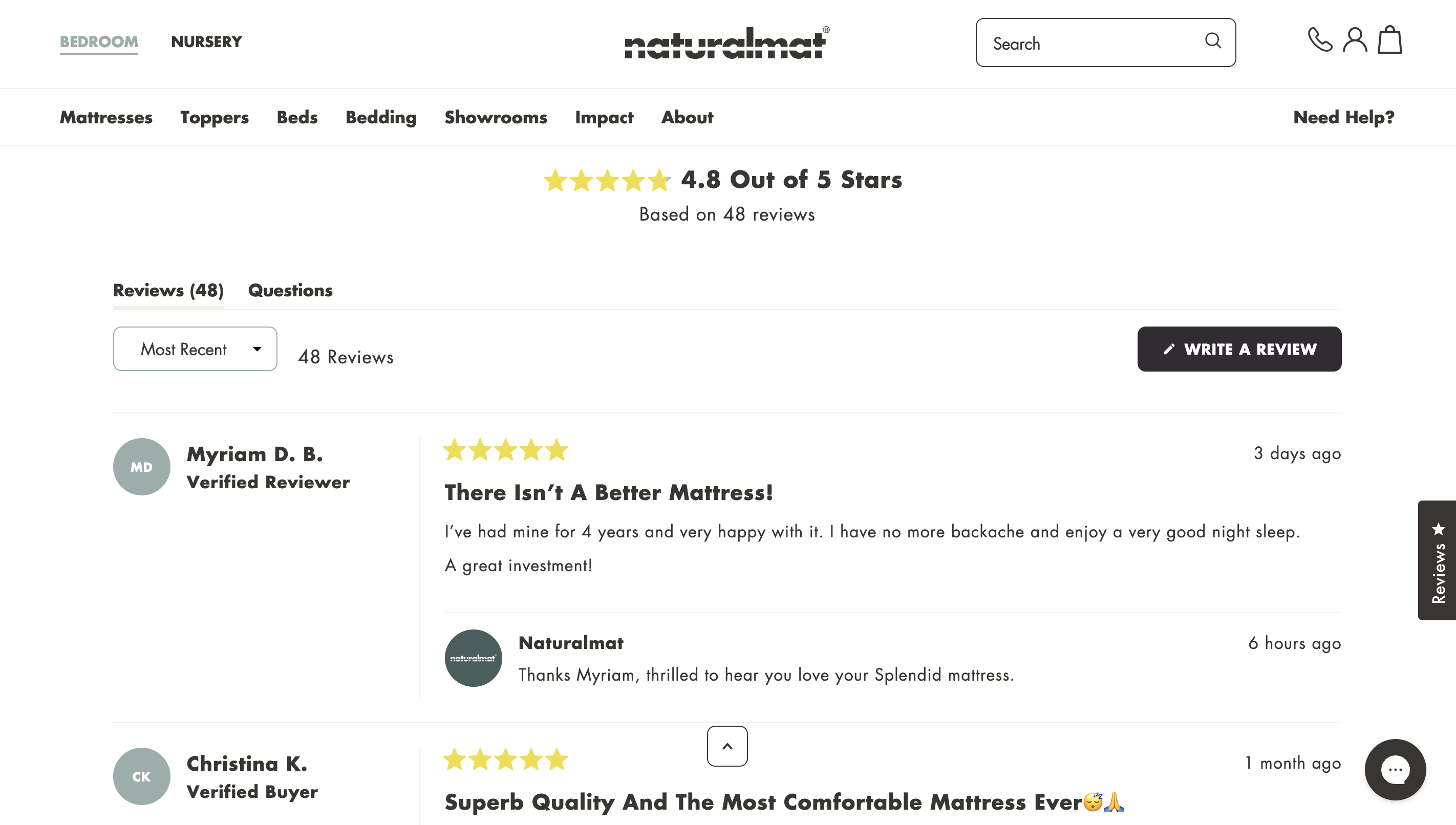
- Clear, accessible return policy – Use straightforward language to outline how and when customers can return items bought online. Ensure your return policy is easily accessible on your website – typically via the footer or product pages. Transparency here reduces perceived risk. Learn more in our guide to effective ecommerce returns management.
- Trust badges and guarantees – Incorporate familiar trust signals such as secure payment logos, satisfaction guarantees, and industry award badges. These subtle cues can have a big impact on perceived legitimacy.
- Showcase company heritage and brand identity – For established retailers with a strong legacy in the home and garden space, highlighting how long you’ve been in business will instantly provide reassurance to customers. We did exactly this for Fishpools, developing an interactive timeline to highlight its long-standing reputation in British retail. Similarly, for Fothergill’s, we brought the brand’s well-recognised logo character to the forefront of the site design, using it as a visual symbol of trust, tradition and expertise.

Embedding reassurance at every stage of the online customer journey can significantly increase consumer confidence – crucial for high-ticket items where trust is such a crucial factor in decision-making.
Challenge: Uncertain lead times for made-to-order items
In home and garden ecommerce, many products are made to order or require complex fulfilment logistics. As a result, lead times can span several weeks or even months, and are often unclear.
A lack of proactive communication around delivery timelines can cause frustration, negative reviews and erosion of brand trust.
Solution: Proactive communication & transparent fulfilment
Brand must prioritise full transparency and maintain open lines of communication with customers – before, during and after checkout.
- Clearly display estimated lead times on product pages, in the cart, and at checkout. Setting expectations upfront helps reduce post-purchase anxiety and improves overall satisfaction.
- Maintain regular communication post-purchase, providing timely updates on order status. If delays occur, address them transparently and promptly to preserve trust.
- Deliver responsive, empathetic customer service. Equip support teams with accurate fulfilment data and consider integrating AI-powered tools or chatbots to ensure consistent, real-time responses – especially during high-volume periods like BFCM or seasonal sales.
By managing expectations effectively and maintaining strong communication throughout a customer’s journey, retailers can reduce friction, build trust and turn potentially negative experiences into positive, loyalty-building interactions.
Navigate home & garden ecommerce with Swanky
The home and garden ecommerce sector presents a unique set of challenges – but with the right strategies and technologies in place, these complexities can be transformed into opportunities for sustainable growth.
At Swanky, we help retailers create the foundations for a successful Shopify store, then build on these with our award-winning growth services. From systems integration and SEO to POS and PPC, our in-house ecommerce specialists are well-versed in crafting compelling digital solutions in the home and garden industry.
If you’re planning your next phase of digital growth, we’d love to hear from you. Get in touch with our solutions team to explore how we can support your ecommerce journey.

